Scout’s Design Nails the Mix of Heritage and Modernity
It’s such a clever idea that one wonders why VW didn’t do it years ago.
As the inimitable Jason Cammisa so perfectly explained in the latest installment of his “Icons” video series (and if you haven’t watched it yet, go check it out; it’s well worth your time), Europe’s largest automaker has had quite a complicated relationship with the U.S. market. Hence, someone in Wolfsburg must have realized that while designing a big, butch SUV to match the best on the market is something VW is undoubtedly capable of, convincing American buyers to buy it might be a harder sell. After all, this is a market segment where brand image plays a crucial role, and customer loyalties run deep.
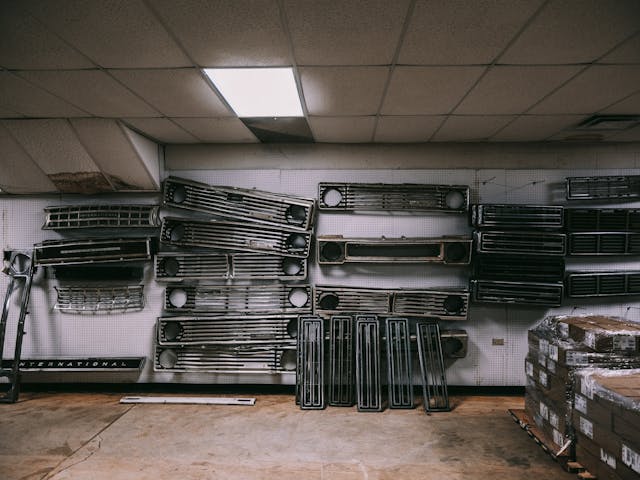
The answer is Scout Motors. A genuine all-American nameplate, dormant for a long time but with a loyal fanbase and an off-road heritage that’s second to none. Volkswagen acquired the Scout name through its purchase of Navistar International in 2020, which gave it all it needed to tap into the American public’s seemingly endless appetite for large, rugged off-road vehicles. Still, even the most cunning of plans is only as good as the way it’s executed, and the people tasked with bringing the Scout into the 21st century clearly did their homework.

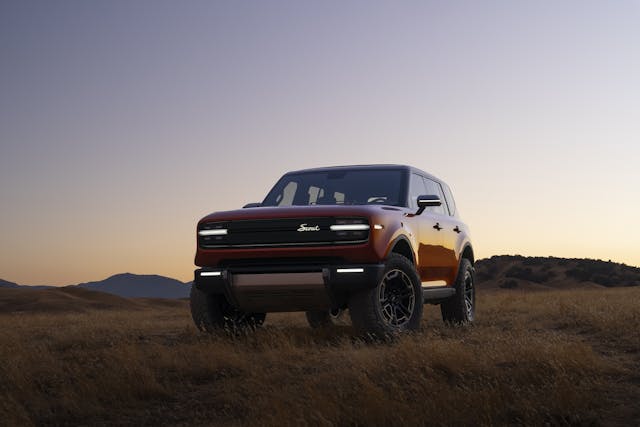
The new Scout Terra pickup and Traveler SUV appear to be, at least from a design standpoint, a genuine home run. The more I look at the pictures released last week, the more refreshing it feels to see such a clean and well-resolved design, where every line has a purpose and every element neatly ties with the others to create a cohesive, appealing whole. But to fully understand why the new Scouts, especially the Traveler SUV, look so good, we must, as always, start from the basics.
As I’ll never tire of repeating, proportions make or break a design, and the team who worked on the new Scout clearly got the memo. Taking full advantage of the fact they were working on a clean-sheet project, devoid of any pre-existing technical constraints, Scout Motors’ designers managed to keep the new Traveler’s proportions very close to those of the classic ’72 Scout II. And that’s a very good thing, as the good ol’ Scout is, in my view, among the best-looking off-roaders of its era.

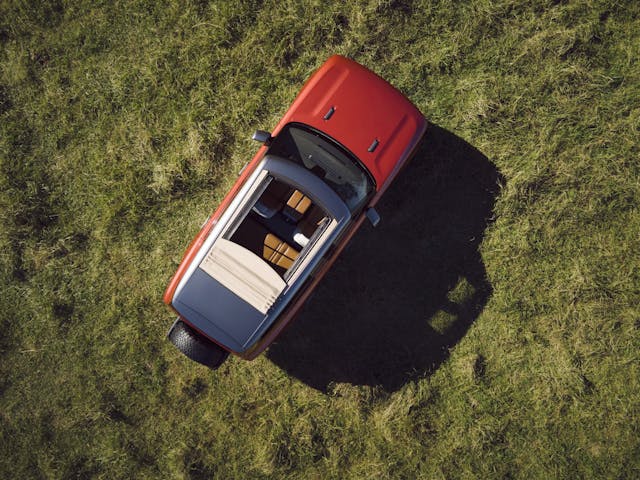

The front overhang is nice and short, which is extra desirable on an off-road vehicle because it makes for a wider angle of attack. The rear overhang instead is more generous as the cabin’s volume is pushed towards the back, so most of the vehicle’s visual “weight” rests on the rear axle. This gives off a sense of latent power, akin to that of a beast ready to pounce. The height of the glazed surface is about two-thirds of that of the painted bodyside, which is pretty much how it was on the original, as well.
But if the new Scout’s proportions are very much on the classic side, the way its volume has been sculpted is bang up to date. The bodyside surfaces are just as clean and unadorned as they were on the original Scout. Still, their crowning has been expertly judged to convey a sense of quality and solidity that the 52-year-old original could only dream of. On top of this, Scout Motors’ designers have also given the new models a far more “muscular” appearance than their forebears.

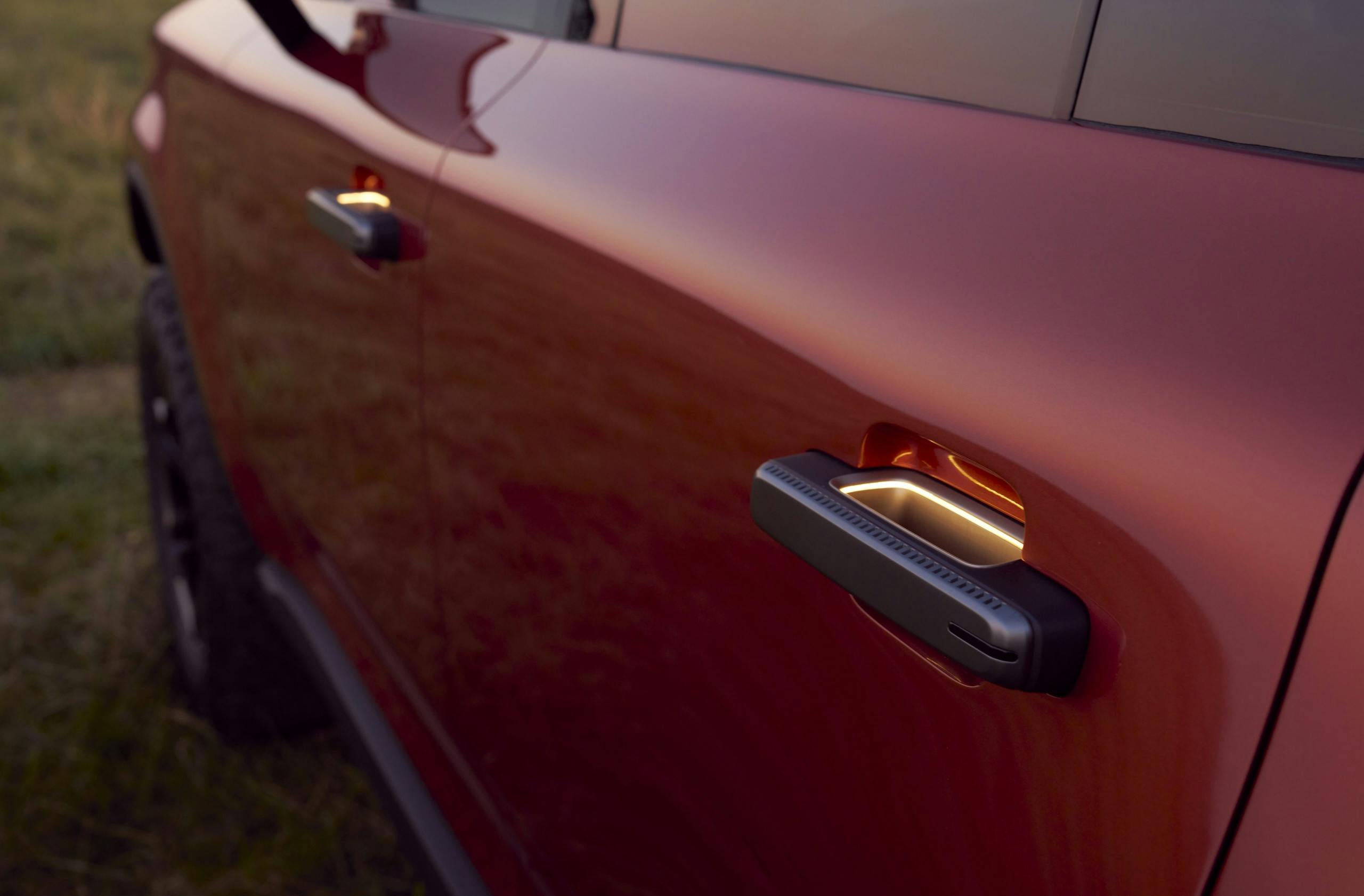

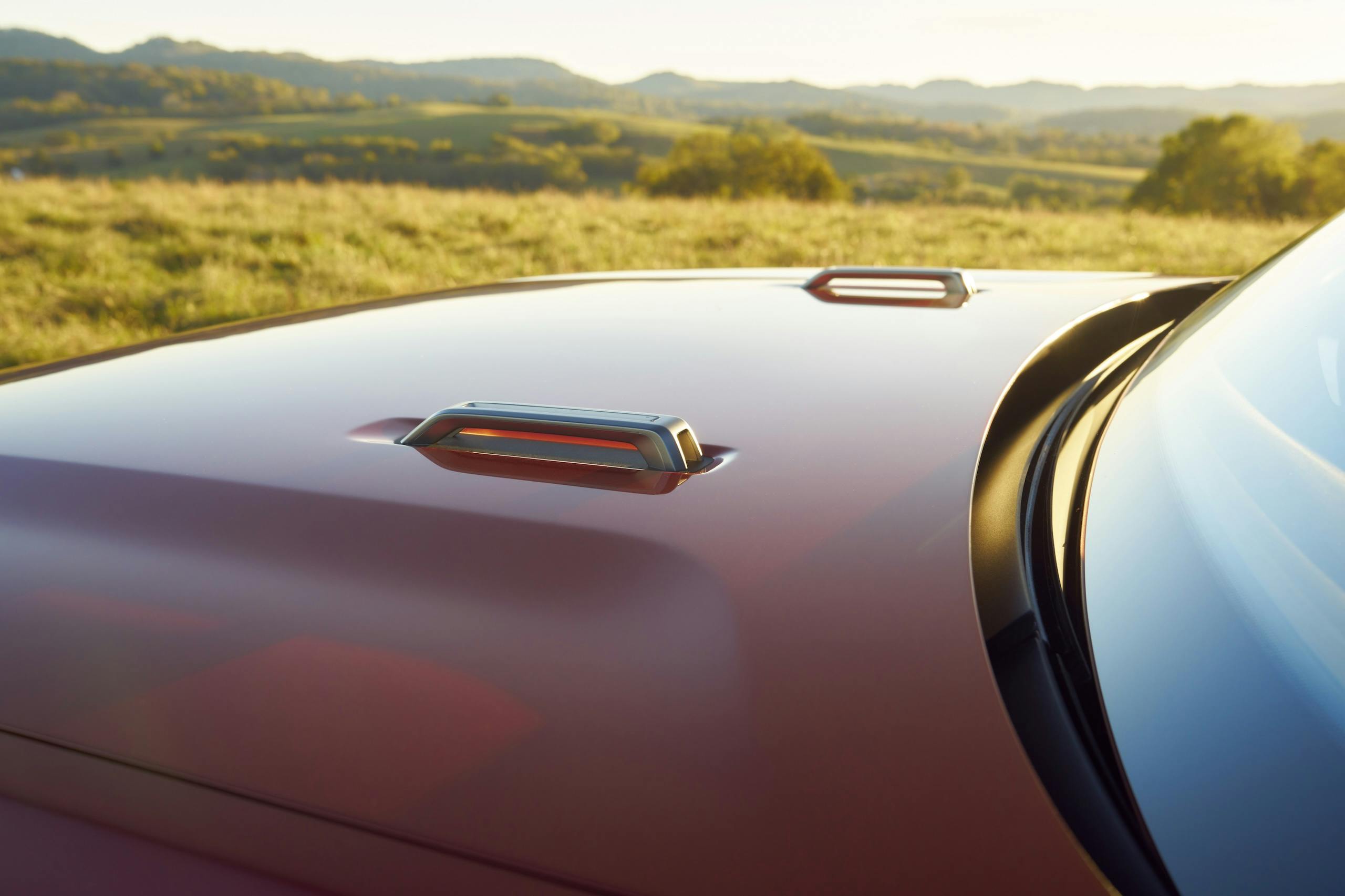
The model from the 1970s, much like most of its contemporaries, has arrow-straight flanks and wheel arches that simply cut into the volume with just a minimal flare to them. Not so the new Scouts, though. The new model’s chunky, large-diameter wheels are further emphasized by bulging wheel arches that are then blended nicely into the bodyside’s main volume. This is nothing new, of course, as such emphasis on the wheel arches is something car designers have been doing left and right for well over two decades now. But if the wheels are made to sit nice and flush with the wheel arch edges, as they do on the new Scouts, it all contributes to the vehicle appearing planted and purposeful.

As was often the case with off-road vehicles back in the day, the Scout II’s bumpers were simple metal blades designed to be easily removed and thus were not an integral part of the design. The new Scout’s bumpers obviously couldn’t be that basic, but it’s evident that the designers sought to create a similar effect by treating the bumpers as separate, purely functional elements. Still, I like how the one and only character line present on the Scout’s otherwise clean bodyside ties nicely with the upper edges of the front and rear bumpers, creating a visual connection that emphasizes the vehicle’s length.
Once a vehicle’s overall proportions are set and its volume sculpted to perfection, the last ingredients of a successful exterior design are the so-called “graphic” elements: window contours, lights, and grilles, up to and including the shutlines between the various body panels.

The beltline (the lower edge of the side windows in car design jargon) is nice and straight as it was on the classic model, and on the Traveler SUV, it duly sports the upward kink that was such a distinctive feature of the Scout II. The full-width rectangular grille also gives a clear nod to the older model, but I appreciate how, for the new Scouts, the designers chose not to go full retro on this aspect. Instead of aping the rounded shape of the Scout II’s sealed beams, the new Scout’s daytime running lights run the grille’s entire perimeter and are complemented by a simple, horizontal element that oh-so-neatly ties with the obligatory side markers on the fenders. The same repeats at the rear, and the result is very slick indeed.


Still, at this point, one could argue that, given that the new Scouts are EVs, there’s no hard technical reason why they need to have the same essential form factor as a vehicle launched during the Nixon administration. But while that is undoubtedly a fair point, it’s also a largely moot one.
After all, vehicles in this category predominantly sell on their butch, masculine appearance. Moreover, there’s little point in reviving a historical nameplate, especially a long-dormant one, if the public cannot make a clear connection between old and new, whether they are familiar with the classic models or have just learned of their existence.
As a result, I believe that Scout Motors’ design team had no choice but to go down the safe path, and they have done so brilliantly. Production of the new Scouts won’t begin before 2027, though, so we still have to wait a while to see whether VW’s latest American gamble will pay off. But one thing looks certain: if the whole Scout Motors operation turns out to be a failure, the designers won’t be the ones to blame.











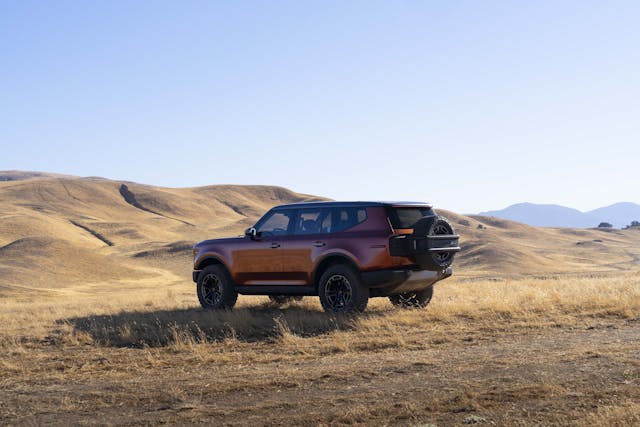









I had not felt the urge to shop for a new SUV for a very long time (especially an electric one!), but I find myself strangely drawn to this new Scout. However, if they end up pricing out at $80K+ like so many newer vehicles, just looking at articles like this one is as close as I’ll ever come… Making the rig look attractive is one thing but making it affordable at the same time is really key for most American buyers – and the designers don’t have much influence there, either.